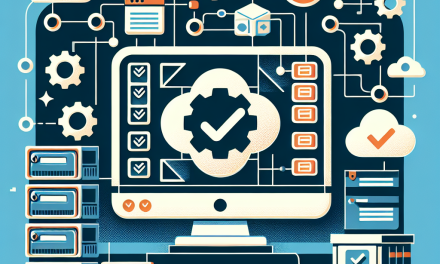Kubernetes, the powerful container orchestration platform, has become a cornerstone of modern cloud-native applications. As organizations embrace Kubernetes, ensuring security and proper access control becomes paramount. One of the essential mechanisms for managing access within Kubernetes is Role-Based Access Control (RBAC). In this article, we’ll explore what Kubernetes RBAC is, how it functions, and best practices for implementing it effectively.
What is Kubernetes RBAC?
Role-Based Access Control (RBAC) is a method of regulating access to resources in Kubernetes based on the roles of individual users within an organization. In Kubernetes, RBAC allows cluster administrators to define:
- Roles: Specific permissions associated with resources (e.g., pods, services).
- Subjects: Users or user groups who will have the defined roles.
- Bindings: Connections that associate subjects with roles.
With RBAC, you can grant fine-grained access control, ensuring that users can only perform actions that align with their roles, enhancing the overall security of your Kubernetes environment.
Key Concepts of Kubernetes RBAC
1. Roles and ClusterRoles
-
Roles define permissions within a specific namespace. They contain rules that can allow or deny actions like get, list, create, update, delete, etc.
Example of a Role:
yaml
apiVersion: rbac.authorization.k8s.io/v1
kind: Role
metadata:
namespace: default
name: pod-reader
rules:- apiGroups: [“”]
resources: [“pods”]
verbs: [“get”, “list”]
- apiGroups: [“”]
-
ClusterRoles are similar but are not limited to a single namespace. They can be utilized across the entire cluster and can also define permission for cluster-scoped resources.
2. RoleBindings and ClusterRoleBindings
-
RoleBindings associate a Role with a user or group, granting the permissions defined in that Role within a specific namespace.
Example of a RoleBinding:
yaml
apiVersion: rbac.authorization.k8s.io/v1
kind: RoleBinding
metadata:
name: read-pods
namespace: default
subjects:- kind: User
name: “jane.doe”
apiGroup: rbac.authorization.k8s.io
roleRef:
kind: Role
name: pod-reader
apiGroup: rbac.authorization.k8s.io
- kind: User
-
ClusterRoleBindings serve a similar purpose but link a ClusterRole to subjects at the cluster level, allowing them to access resources across all namespaces.
3. Policies and Rules
RBAC operates using three primary components: apiGroups, resources, and verbs.
- apiGroups: Specifies the API group of the resource. An empty string represents core resources.
- resources: The type of resources to which the rules apply (e.g., pods, services).
- verbs: The actions that can be performed on resources (e.g., get, create, delete).
How RBAC Works
When a user—or a service account—requests permissions to perform an operation, Kubernetes checks the request against RBAC policies. The control plane, specifically the authorization module, evaluates the user’s permissions at the time of the request to determine if the action is permitted.
This request evaluation involves checking the RoleBindings and ClusterRoleBindings associated with the user to ascertain which roles they possess and whether those roles allow the requested action.
Best Practices for Implementing RBAC
1. Principle of Least Privilege
Always apply the principle of least privilege. Grant only the minimum permissions necessary for users or services to perform their jobs. This reduces the attack surface and minimizes potential security risks.
2. Create Specific Roles
Define roles that are specific to job functions rather than generic all-encompassing roles. This helps in maintaining clarity and control over access permissions.
3. Regular Audits and Reviews
Regularly audit RBAC configurations and permissions. Automation tools can aid in identifying unused roles, overly permissive roles, and roles that require updates due to changes in personnel or job functions.
4. Utilize Namespaces Effectively
Make use of namespaces to isolate different environments and teams. This allows you to apply different RBAC policies for different parts of your organization while maintaining a clear organizational structure.
5. Leverage RBAC Logging
Enable audit logging to track RBAC decision-making. This provides insights into who accessed what resources and when, which is vital for compliance and troubleshooting.
Conclusion
Kubernetes Role-Based Access Control is essential for managing permissions and securing your cluster effectively. By understanding its components and functionalities, and adhering to best practices, organizations can create a robust security posture in their Kubernetes environments. As the cloud-native landscape continues to evolve, mastering RBAC will empower teams to operate within Kubernetes safely and efficiently.
By staying informed and diligent about RBAC, organizations can not only protect their resources but also streamline their Kubernetes operations, enabling a more secure and efficient container orchestration ecosystem.





